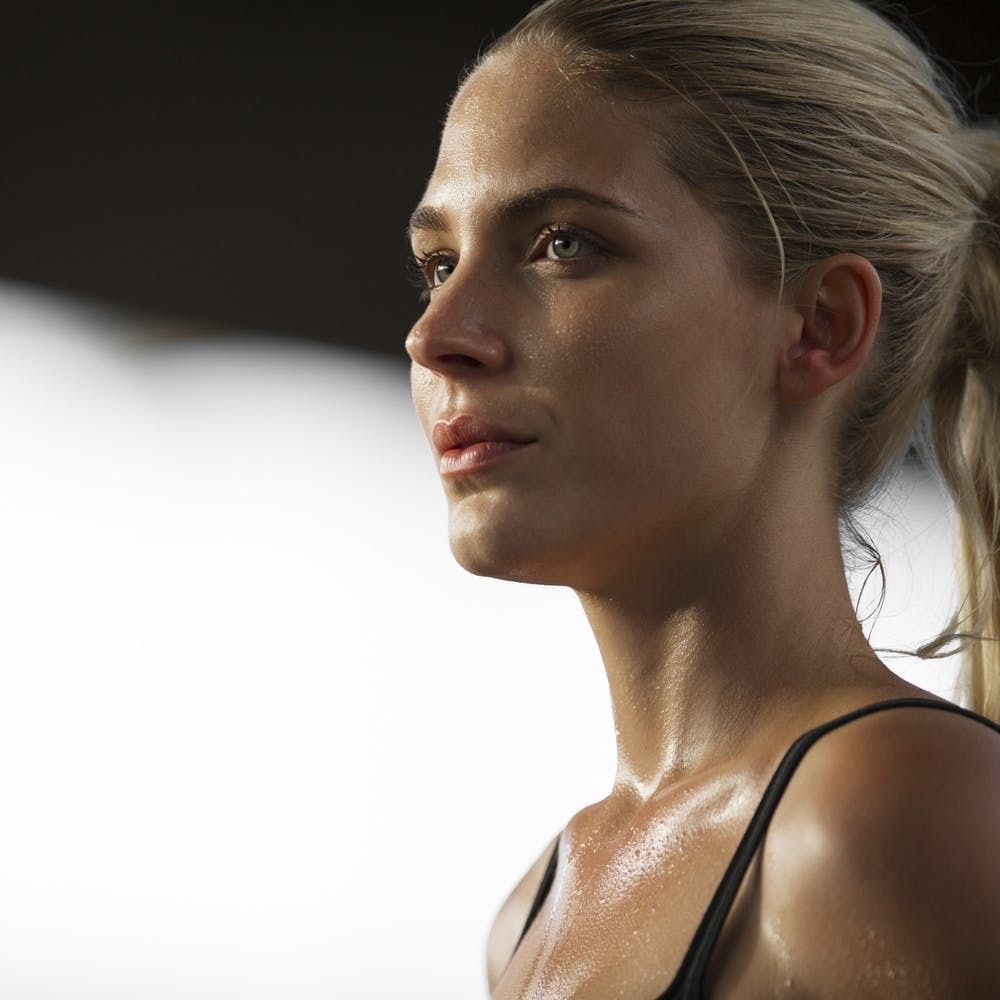We know physical activity is highly beneficial and necessary for our bodies to function at their optimal levels. Sometimes, though, strange workout symptoms leave us wondering if our bodies know that. From beet-red cheeks to shaking, aching muscles, our bodies tend to freak out a bit when pushed to their limits. No need to worry, though. In most cases, the weird internal and external reactions we experience during exercise are completely normal!
But it’s important to identify when something’s just a result of hard work and when something may need medical attention. Here, with the help of some Aaptiv trainers, we break down some of the most common weird workout symptoms you may feel and why they may occur.
1. You sweat like crazy even during a light workout. No need to worry. “Our core body temperature rises when we exercise and sweating is our way of adapting so we don’t overheat,” says Aaptiv trainer Jennifer Giamo. And everyone’s different, so don’t be concerned (or embarrassed!) if you run through two towels per workout and your BFF sports a light glisten. “It really depends on the number of sweat glands you have and how active they are,” says Giamo. “Women actually tend to have more than men, but men’s are more active.”
Your body will also get better at cooling itself as you exercise more. So, more workouts may mean less sweat in the long run.
2. Your face stays red for hours after workouts. You’re probably just hot. “Exercise dilates blood vessels and a hard workout builds heat, sending oxygenated blood to the skin’s surface, which causes redness,” says Giamo. If you have fair or sensitive skin, you’ll likely feel and see the effects of this a bit longer than your more olive-skinned friends. This may improve with increased physical fitness, but it’s totally normal if not. If you experienced rashes or hives, however, see a doctor or allergist. This may indicate something different brewing beneath the surface, or potentially a rare exercise or sweat allergy.
3. You feel fine after your workouts but can barely move two days later. Introducing the dreaded DOMS, or delayed onset muscle soreness. “When we exercise, we create tiny micro tears in the muscles along with inflammation, which causes this discomfort,” says Giamo. “The body can take 24 to 72 hours to repair, so you may feel sore for a few days post-workout.”
If you regularly experience intense soreness for more than 72 hours, you should incorporate an active rest day the day following a particularly challenging run or lift. “Do some steady-state cardio, such as running or biking, for 30 minutes to get everything moving and still working,” says Aaptiv trainer Ben Green. “I guarantee you’ll feel less sore come day two.”
Also, add yoga and stretching workouts in between high intensity or heavy lifting days. This will give your body and mind a break, as well as stretch out sore muscles, which can help prevent future pain.
4. Exercise makes you have to run for the bathroom. If you’ve ever had to rush into an open stall mid-cardio, you’re probably either cursing the fitness gods or just wondering what’s up. “This is common, especially among runners,” says Giamo. “The pound on your body gets the intestines moving (AKA your intestinal motility) and shakes up the bowels.”
You may also be dehydrated. “If the body doesn’t have enough fluids, the only option is to eliminate,” says Giamo. “Movements that put pressure on the bladder, such as twisting, pulling or lifting, can also leave you needing to go.” This phenomenon is more, uh, regular than you may think. Here are some more suggestions for how to minimize bathroom breaks during your workouts.
5. Your muscles shake like crazy when you’re lifting weights. There are a few reasons your arms or legs might shake during strength training. “Dehydration can cause this,” says Giamo. “The connective tissue in our bodies need fluid to work properly. When we’re not properly hydrated, this can also affect our electrolyte balance, which can impact muscle contractions.” Try drinking a bit more throughout the day before and after your workouts and see if the shaking subsides.
If not, look at your form. “You always want to make sure the base of support is stable when lifting weights,” says Green. “And that means keeping your form and posture in check.” Use the mirrors in your gym to make sure you’re using the right form when lifting.
6. You feel like you’re going to throw up during workouts. We know exercise gets our bodies moving — externally and internally — and that includes our stomachs. “If you feel nauseated during a workout, first of all, ask yourself if you’re actually going to throw up or if you just feel like throwing up,” says Green. “If you just feel a little queasy, try slowing down or pulling back just a little bit to see if that helps settle everything down.” If you continue to consistently feel ill when working out, here are some other suggestions for alleviating nausea during exercise.
What weird but normal workout symptoms do you experience? Share them with us at @BritandCo and @Aaptiv.
(Photos via Getty)
